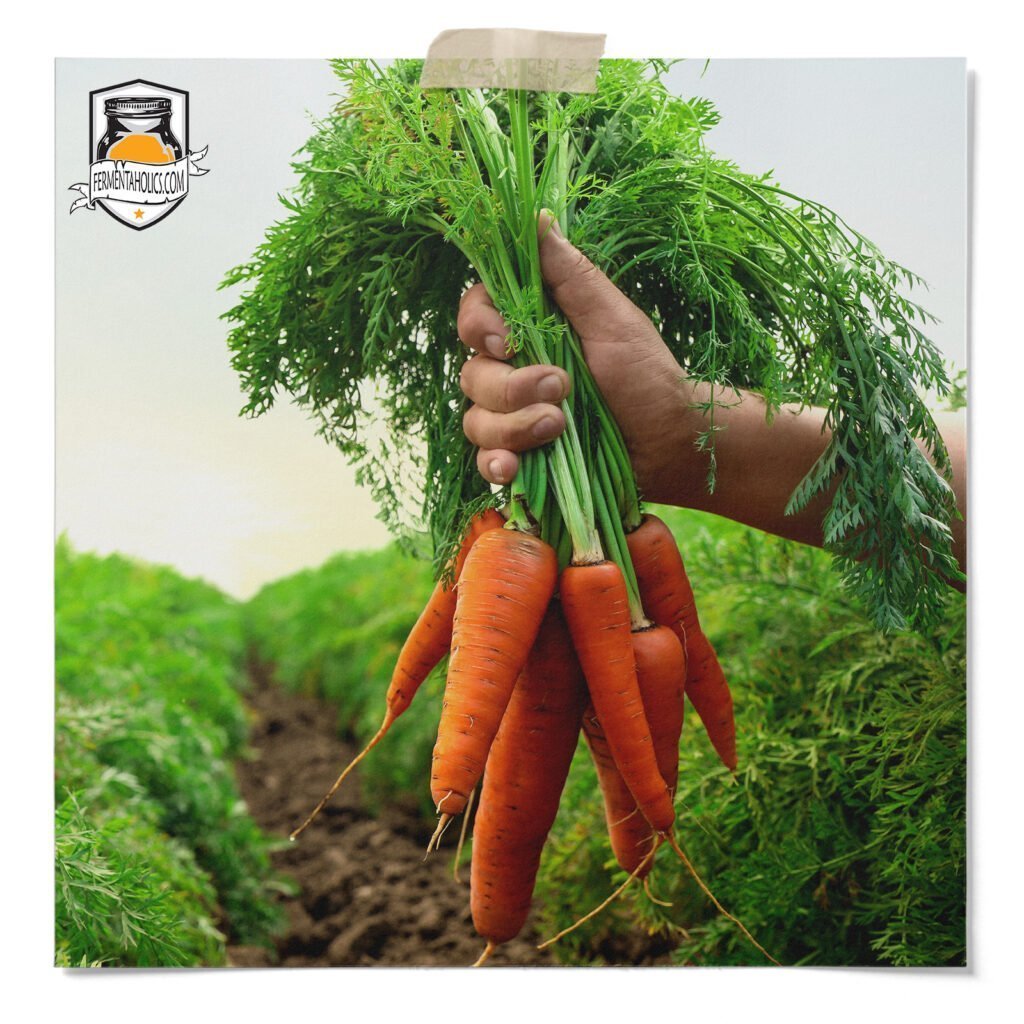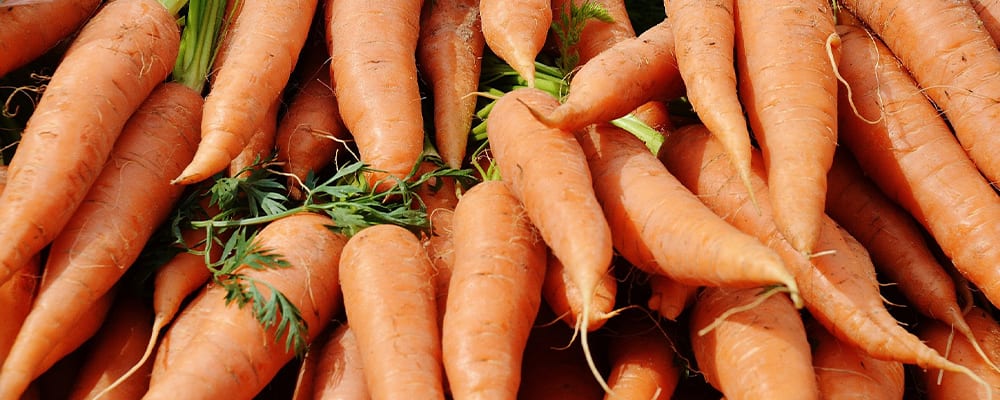
This recipe is great for the big bag of carrots in your fridge that you don’t want to go bad, but you don’t know what to do with. Rather than letting them end up in your compost bin, whip up some brine and preserve them! This recipe is super quick and can be applied to pretty much any extra veggies you have in your fridge that need to be used up.
I like to sneak turmeric whenever I can, as it’s said to be an anti-inflammatory and a powerful antioxidant. It helps, though, when whatever your adding turmeric to is already bright orange in color, so it doesn’t seem so out of place.
The healthy properties of turmeric are better absorbed by the body when black pepper is consumed alongside it. It’s one of those cool relationships that exist in the magical world of food.

By fermenting the carrots and turmeric, you are preserving them by providing an environment where “spoiler” bacteria can’t survive. You’re also cultivating lactic acid bacteria, which increase nutrient density. The lactic acid bacteria digest carbohydrates and produce vitamins and enzymes as a byproduct.
While this is really cool stuff, this pot of gold TASTES delicious, too. It’s got a nice crunchy texture that makes it a great condiment.
Since carrots don’t hold a ton of water as cabbage does, you’ll need to assist it by making a brine.
A good brine ratio is 1/2 cup salt to one-gallon water. This can be adjusted to whatever size you want, but I usually just make a full gallon of brine and see what I can ferment in my fridge–try it and get creative!
1
Quart10
Minutes3
DaysThis fermented carrot with turmeric recipe will make one quart.
4 Large Carrots (Grated)
4 TBSP Fresh Turmeric (Grated)
1 TSP Black Pepper
4 Diced Cloves of Garlic
3 Sliced Scallions
1-2 Cups Brine
1 Quart Mason Jar
Add the carrots, turmeric, pepper, garlic, and scallions into a bowl to mix it all up – then add to a quart jar.
Pour in enough brine to just cover the carrots.
Place the follower (cabbage leaf in photos below) in the jar and press down firmly until the brine covers it as well. Add more brine if needed.
Add fermenting weight and make sure everything is hanging out below the brine.
If the weight you choose allows, place the lid loosely on top of the jar. If not, cover with a dishtowel and set aside to ferment.
Allow the carrots to ferment for about a week. This time frame is pretty loose and depends on the flavor and texture you want to achieve. You can begin tasting around day 3 to see if that’s how you like it. Experiment and see what you prefer!
